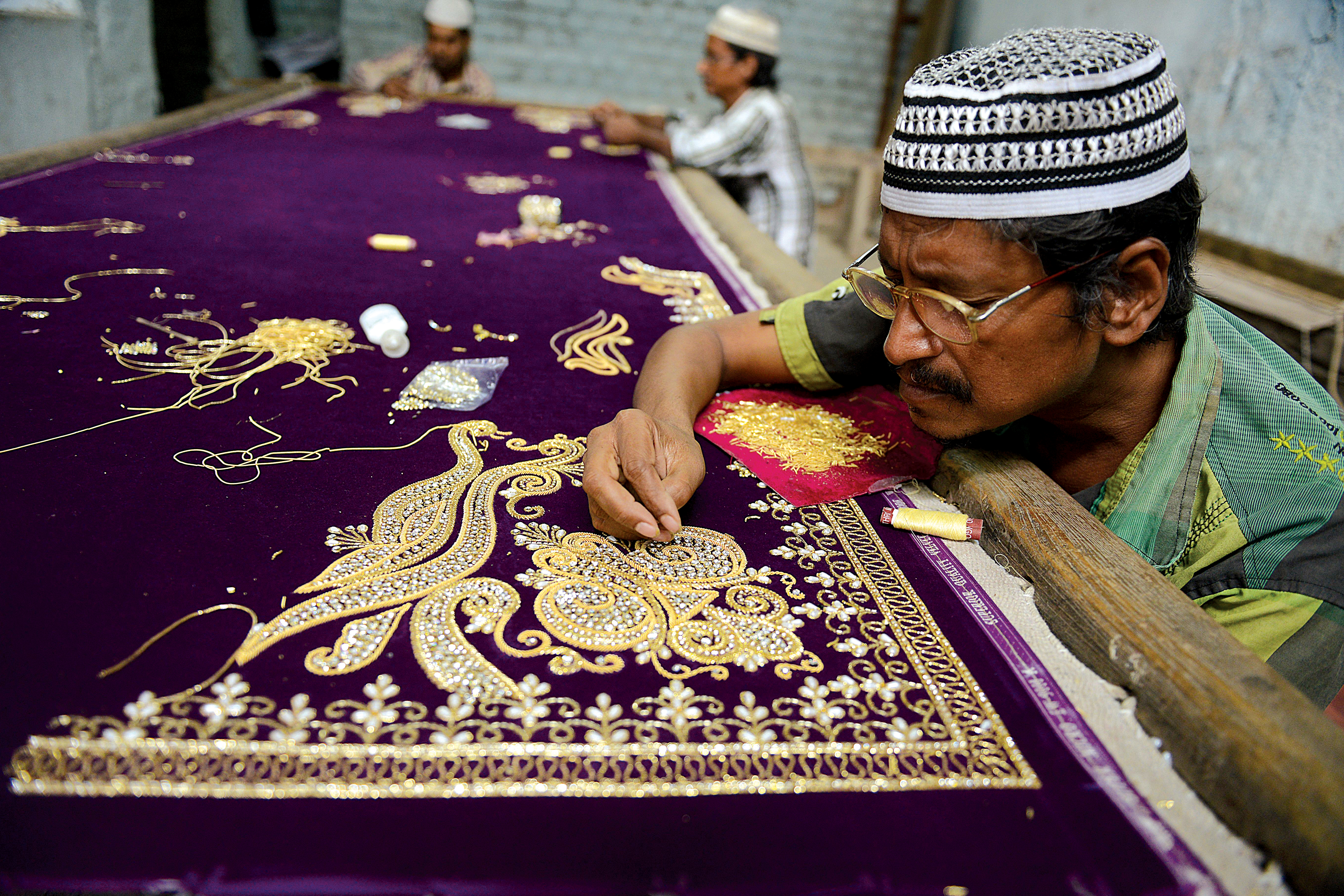Voices from the fashion industry express distress about the absence of predominantly Muslim workforce because of anti-CAA protests that prevent them from commuting to studios
The fashion industry can be described as one that interweaves various colours. From a community of fashion enthusiasts that go gaga over every spring, summer and fall launch from Gucci and Prada to the environmentalists who want to dress their best without harming Mother Earth, it’s a huge industry with stakeholders from all walks of life.
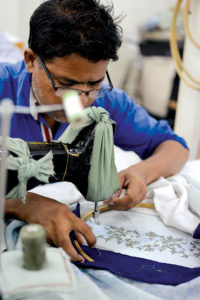
It has at one end of the spectrum Bernard Arnault, the current CEO of LVMH, the third richest man in the entire world with a net worth of $108 billion. Then there are those who sit for hours cutting, sewing, hand embroidering garments that are worn by folks around the world. A trip to one such garment studio is enough to learn about the hard work and intricacy that goes into creating different silhouettes and effects in fashionwear. Multiple trips to different studios will solidify your belief in the skills of these craftsmen who are way more talented and dexterous than most professionals we meet in the organised sector.
The other day, designer Karishma Sharma (name changed) shared her distress regarding her Muslim workers not showing up to work. Her concern towards the absence of her team members was intense enough to make her worry about the Citizenship Amendment Act.
“What do you think will happen to the Muslim community in India?” Sharma asked fretfully, saying that there are only two Hindus in her team — her partner and herself. The situation is not unique. In most apparel studios, a majority of craftspersons are of the Islamic faith.
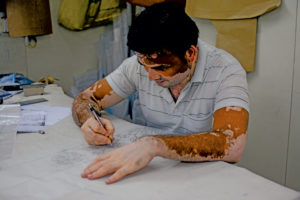
Sharma is told by her social media manager that they must not post their regular sales-centric content on their social platforms and in fact, use the medium to show disregard for the passed bill. However, Sharma is not quite sure how to dealing with a situation like this. “I don’t know what to do, on one hand, I am being directly affected by this calamity as my team members from Badarpur are not able to reach office because of riots in the area. On the other hand, the government is such that it takes into account who is saying what about them. It is a difficult place to be in,” shares Sharma.
“Three of our craftsmen were stopped in broad daylight hardly a hundred meters away from our office and were asked to show documents. Although they had their Aadhar card with them, they were scared for their families back home”, adds Sharma who eventually decided to reshare stories and posters on Instagram.
In contrast, NorBlack NorWhite, a label that is designed and produced in India and is run by Canadian sisters of Indian origin, took to Instagram to put out their views on the CAA. ‘Who is Indian?’ says one of their posts with the caption, “We are immigrants and children of immigrants. We are now privileged with passports and access to travel and home. We are confused, sad and feel sick about the political climate in India and really around the world. If you don’t know what’s happening here, this is what we are understanding from all the stories being shared. In Solidarity for Justice, Peace & Human Rights.”
Their take on the government’s moves lives up to the essence of their brand name. In the comments section, people have mocked, loved and hated their stand on the issue.
Brands like Rahul Mishra and Péro, that are internationally known, have refrained from talking about the issue on their widely followed social media platforms. While most tailors and embroiderers at these fashion studios are Muslims like in any other, both the brands also work with craft clusters back in the villages that are run predominantly by craft communities of the Muslim faith. Be it the weavers in Benaras, Bengal and Kutch to the Chippa block printers, most craftspersons are from areas predominantly populated by Muslims. Péro extensively gives employment to Muslim women who have come to Delhi from Afghanistan and are skilled at making crochet products. Rahul Mishra has spoken about employing Bangladeshi immigrants in one of his interviews at Paris Fashion Week.
Earlier this week, Tulika Ranjan, a New Delhi-based fashion designer messaged her colleague, Shahzad, querying about his wellbeing. In the Whatsapp conversation that she shared on her Instagram stories, she tells the master craftsman to take care of himself and to not worry about the current political climate in the country. To which Shahzad responds with, “Mere Dadaji ek freedom fighter thhe” (My grandfather was a freedom fighter).
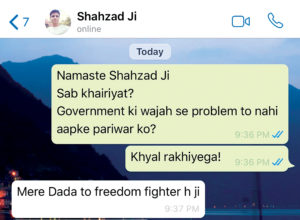
Shahzad on a phone call explains the Muslim community’s expertise in handiworks. “We are not privileged enough to get an education so most of our children end up learning garment making from a young age. By the time a craftsman reaches the age of 18 he is exceptional in his work.”
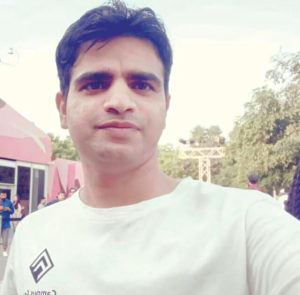
Shahzad is of the view that it is the people who have chosen the government. “There are definitely some reasons that have made the government take a decision like this.” According to him, the government should look at the economy that is the lowest in the last three quarters. “People should read the CAA documentation before forming judgments and not form opinions based on what they are hearing from others. At the end of the day, Muslims are the safest in India. People of all faiths, even sub-communities within Islam are allowed to practice their religion in their own way. It is not the case in countries like Pakistan, Afganistan, Bangladesh or Myanmar.”
While Shahzad’s sense of security will come in handy when dealing with the after-effects of countrywide CAA+NRC, Ranjan explains that not everyone is feeling confident about the situation irrespective of their relationship with India. “This bill will not only affect the immigrant craftsmen but those who have taken birth in India. None of them have their documents with them. CAA allows people of all faiths to stay back in the country, what about Muslims?”
Bhagalpur and Maheshwar are two Muslim-dominated craft clusters in India where Ranjan has worked as a designer in projects funded by the Ministry of Minorities. She says that it is ironic that now the government wants to exclude the same community when it comes to citizenship (which is the interpretation of the new law that most protesters believe). She stresses on the fact that most craftsmen are not educated and will not have any documentation to prove their citizenship. She detests the proposed Act on a fundamental level, regardless of the Muslim community’s affiliation with the garment industry.
“Eka and Bodice are the brands I know who have recently spoken about the matter and protested on social media whereas most designers are silent about the matter. Not just them, but the big retail brands that use Muslim talent way more are not talking about it. It is disappointing. This is a very strategic move by the government. I have been going for protests every other day but we have no clarity as to whether the government will change its mind”, suggests Ranjan who looks forward to the design community to come up with solutions for the people who will be affected by this regime. “This is the least we can do for them,” adds the designer who is currently working for Indian and American labels that utilise Indian crafts in their work.
She confirms that some craftsmen end up not reaching work due to riots in various parts of the city. Her team is also finding it difficult to communicate with production units in Saharanpur and Moradabad because of the internet being down which has further deteriorated the flow of work for her American client.
Snigdha Bhasin who is the digital manager at fashion label Amit Aggarwal speaks about the brand remaining silent on the matter. “There are multiple opinions within the studio so it is difficult to say what side should the brand take. I have thought about talking about it on Instagram because I know it’s a platform that can be utilised here but the go-ahead has to come from the senior decision-makers at the studio.
She appreciated how Shweta Kapur, the designer at the label 431-88 took to social media to share her thoughts on CAA and its backlash. “Kapur made it clear that it is up to the designer if they want to speak about the issue or not. There are multiple stakeholders within and outside the organisation thus it is often difficult for brands to take sides”, affirms Snigdha Bhasin.

Aqeeb Riyaz, who is a merchandiser at a Delhi-based apparel designer’s studio tells that 90% of the craftsmen at the studio are Muslims. “I obviously do not support this Act as who has the time to stand in queues for days. Look at the population, how we the government even manage it.” Riyaz is the resident of Jamia Nagar and didn’t go home for five days at the time the area was under a curfew and instead lived with his in-laws in Uttam Nagar.
According to him, the situation has not improved in the locality and he has still been sleeping at his in-laws’ place. His annoyance with the government can be sensed in his voice which he says is an aftereffect of his participation in the protests. “The energy is just carrying forward. I have been going to protests in Jamia after work.”
Although his family members here in Delhi have been safe so far, his extended family in Benaras, his home town has been attacked by police. “Few of my family members are hit by the local policemen where they were only peacefully protesting. Even my family members in Kanpur are hurt. This is not fair,” adds Riyaz.
What is the solution? Answer to this question is difficult at the moment, however, the course of protest and disobedience must not stop until the government does something about its word on citizenship.

